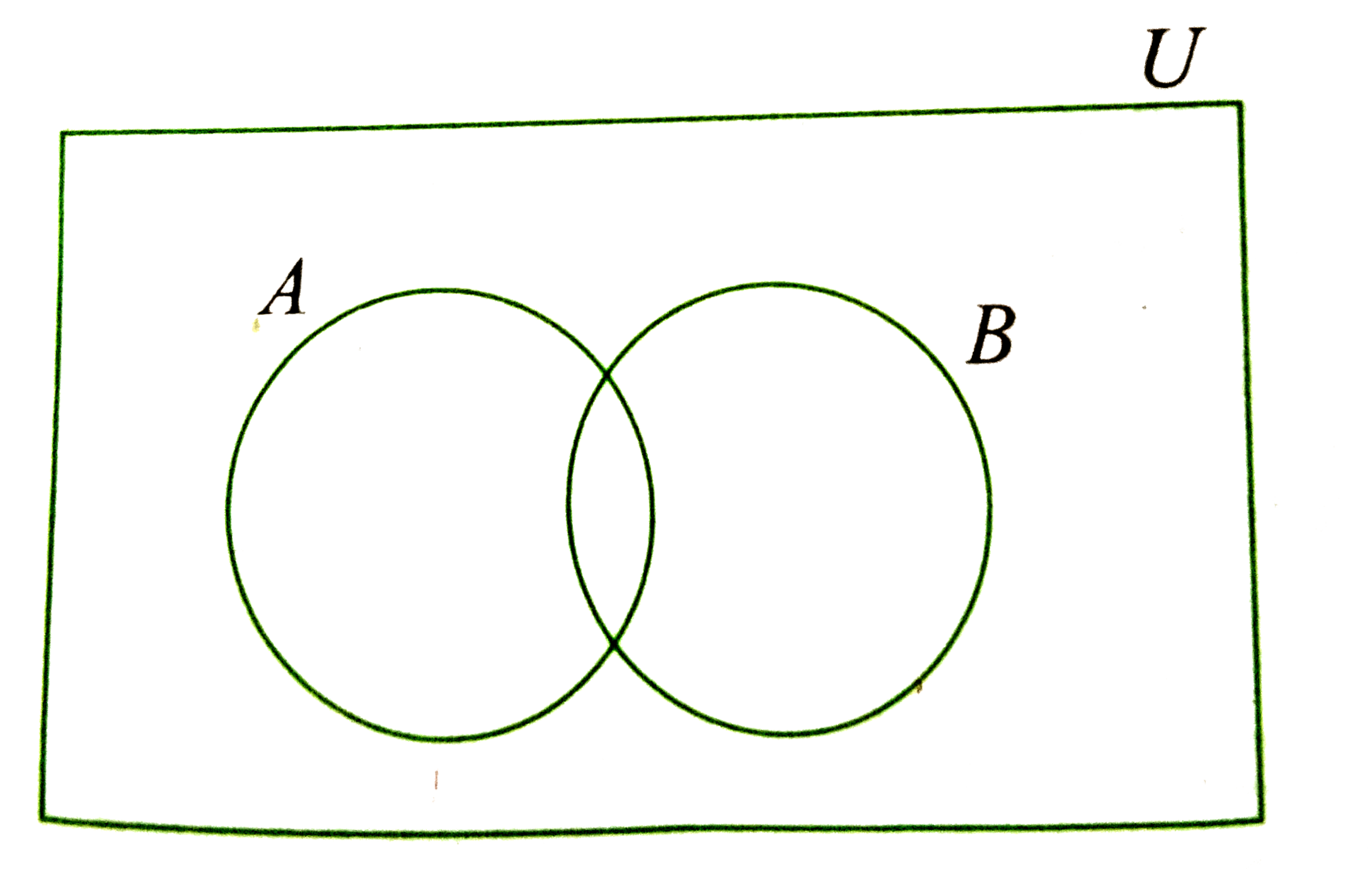Let A and B be two non empty subsets of set X such that A is not a subset of B, then: (a) A is a subset of complement of B (b) B is a subset of A (c) A and B are disjoint sets (d) A and complement of B are non-disjoint setsSolution in Bengali
A is a subset of complement of B
B is a subset of A
A and B are disjoint sets
A and complement of B are non-disjoint sets
The correct Answer is:D
Given that A cancel sub B Then it is not neccressary that B is subset of A as shown in figure

Aslo ,it is not necessary that A and B are disjoint
Obviously ,A and complement of B are not disjoint .
Topper's Solved these Questions
- BOOK - CENGAGE PUBLICATIONCHAPTER - SET THEORY AND REAL NUMBER SYSTEM EXERCISE - Archives1videos
SET THEORY AND REAL NUMBER SYSTEM
- BOOK - CENGAGE PUBLICATIONCHAPTER - SET THEORY AND REAL NUMBER SYSTEM EXERCISE - Concept Application Exercise 1.512videos
SET THEORY AND REAL NUMBER SYSTEM
- BOOK - CENGAGE PUBLICATIONCHAPTER - SCALER TRIPLE PRODUCTS EXERCISE - DPP 2.311videos
SCALER TRIPLE PRODUCTS
- BOOK - CENGAGE PUBLICATIONCHAPTER - SOLUTIONS AND PROPERTIES OF TRIANGLE EXERCISE - Comprehension Type6videos
SOLUTIONS AND PROPERTIES OF TRIANGLE
Similar Questions
If A,B and C are three sets such that A∩B=A∩CandA∪B=A∪C then
03:40View SolutionIf ∣∣x2−7∣∣≤9 then find the values of x
03:40View SolutionNumber of integral value(s) of λ for which vectors x2ˆi−ˆj+xˆk,(λ−1)ˆi−2λˆj−ˆk and ˆi−ˆj+ˆk, in the order form right-handed system ∀x ∈R, is
(a) 0 (b) 2 (c) 4 (d) 605:20View SolutionLet ABC be a triangle in which the line joining the circumecentre and incentre is parallel to base BC of the triangle. Then answer the following questions :
Then range of ∠A is03:00View SolutionLet A and B be two non empty subsets of set X such that A is not a subset of B, then:
01:21View SolutionLet A and B be two non empty subsets of set X such that A is not a subset of B ,then: (a) A is a subset of the complement of B (b) B is a subset of A(c)A and B are disjoint (d)A and the complement of B are non-disjoint
02:43View SolutionLet A,B be two non empty subsets of a set P. If (A−B)∪(B−A)=A∪B then which of the following is correct (X is universal set)
View SolutionLet A and B be two non-empty subsets of a set X. If (A−B)∪(B−A)=A∪B, then which one of the following is correct?
03:53View SolutionIf A and B are two disjoint subsets of a universal set U, then: (A∪B)∩B=
00:52View SolutionLet A and B be two non-empty subsets of a set X such that A is not a subset of B then
03:08View SolutionIf A and B be subsets of a set X . Then
03:52View SolutionLet A and B be two non empty subsets of a set X such that A is not a subset of B then
05:03View SolutionIf A and B are two sets then A-B=B - A if
a) A⊂B
b)B⊂A
c) A=B
d) NOne Of These04:04View Solutionमाना A तथा B समुच्चय X के दो अरिक्त उपसमुच्चय इस प्रकार है कि A,B का उपसमुच्चय नहीं है तो
03:03View SolutionLet A and B be two non empty subsets of set X such that A is not a subset of B, then:
02:13View Solution

